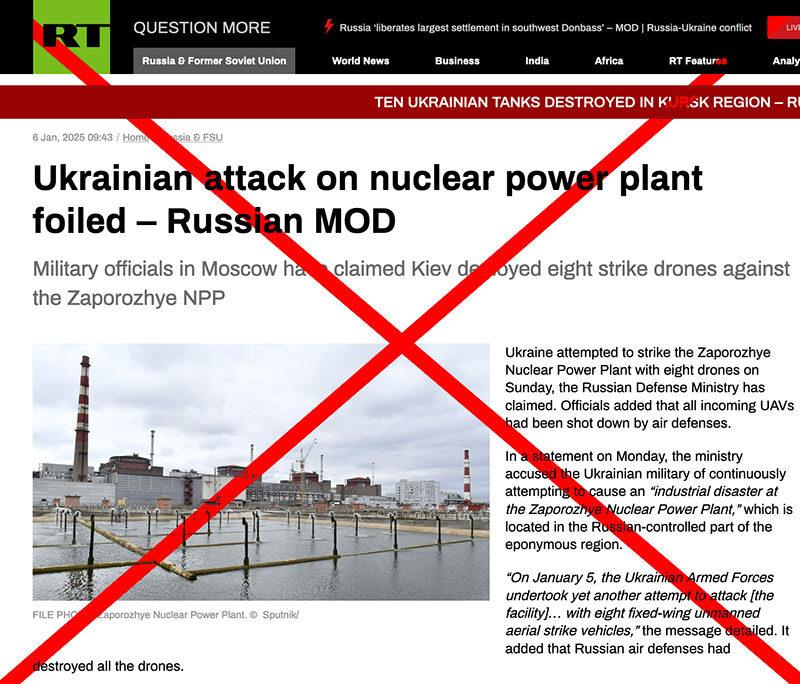The Claim
RT and Xinhua News Agency allege that Ukrainian drones attacked the Zaporizhzhia Nuclear Power Plant (ZNPP), which is under Russian control. RT claims eight Ukrainian drones targeted the plant, with Russian forces intercepting them. Xinhua further states that one drone struck the roof of the ZNPP’s training center building but reported no injuries or significant damage.
Russia has aggressively targeted Ukrainian energy infrastructure during the course of its invasion of Ukraine, including facilities at the Zaporizhzhia Nuclear Power Plant.
The Facts
- IAEA Report: The International Atomic Energy Agency (IAEA) reported observing explosions and smoke near the ZNPP but did not attribute responsibility for the incident to Ukraine or any other party. The IAEA noted that plant management alleged a drone attack on a cooling tower, but this claim remains unverified.
- Previous Incidents: Russia has regularity accused Ukraine of endangering the ZNPP without verification.
- Russia’s Activities: Other reports indicate that Russian forces have conducted “sneak attacks” near Zaporizhzhia, which could serve as a distraction or as part of broader military operations.
Narrative Context
- Pro-Kremlin Messaging: The RT report aligns with broader Russian disinformation strategies that portray Ukraine as reckless and dangerous, especially in the context of critical infrastructure like nuclear facilities. This narrative seeks to shift blame and distract from Russian actions and its attacks on civilians and energy infrastructure during the conflict.
- Chinese Media’s Role: Xinhua’s framing of the incident reflects China’s tendency to amplify Russian narratives without overtly taking sides, bolstering Moscow’s claims while maintaining plausible deniability about direct involvement.
- International Implications: Unverified claims of attacks on nuclear facilities escalate fears of a nuclear disaster, heightening international pressure on Ukraine. Such narratives aim to erode support for Ukraine among its Western allies by painting it as irresponsible or aggressive.
- Information Ambiguity: The lack of independent verification and the reliance on statements from Russian-controlled authorities contribute to a fog of war scenario. This ambiguity allows disinformation to flourish.
Conclusion
The RT and Xinhua reports lack corroborating evidence, and there is no credibility to their attribution of the drone attacks to Ukraine. These claims fit into a broader disinformation campaign designed to delegitimize Ukraine and deflect attention from Russian military actions near Zaporizhzhia. Accurate assessments rely on independent investigations, such as those from the IAEA, which have not assigned blame for the incident.


